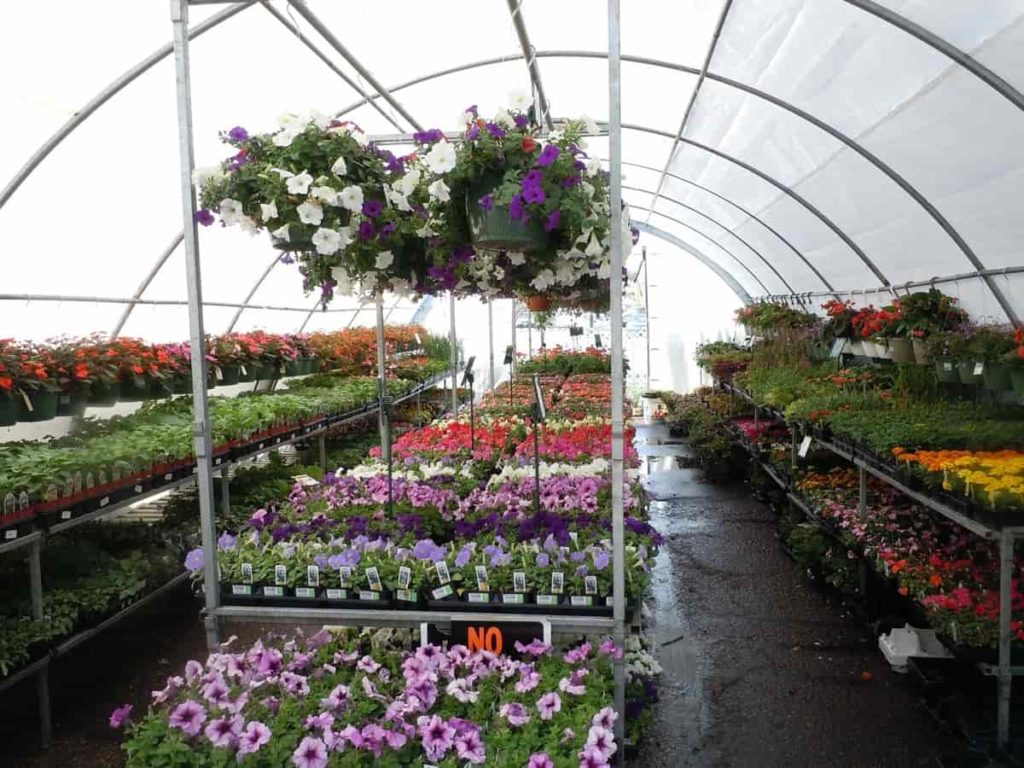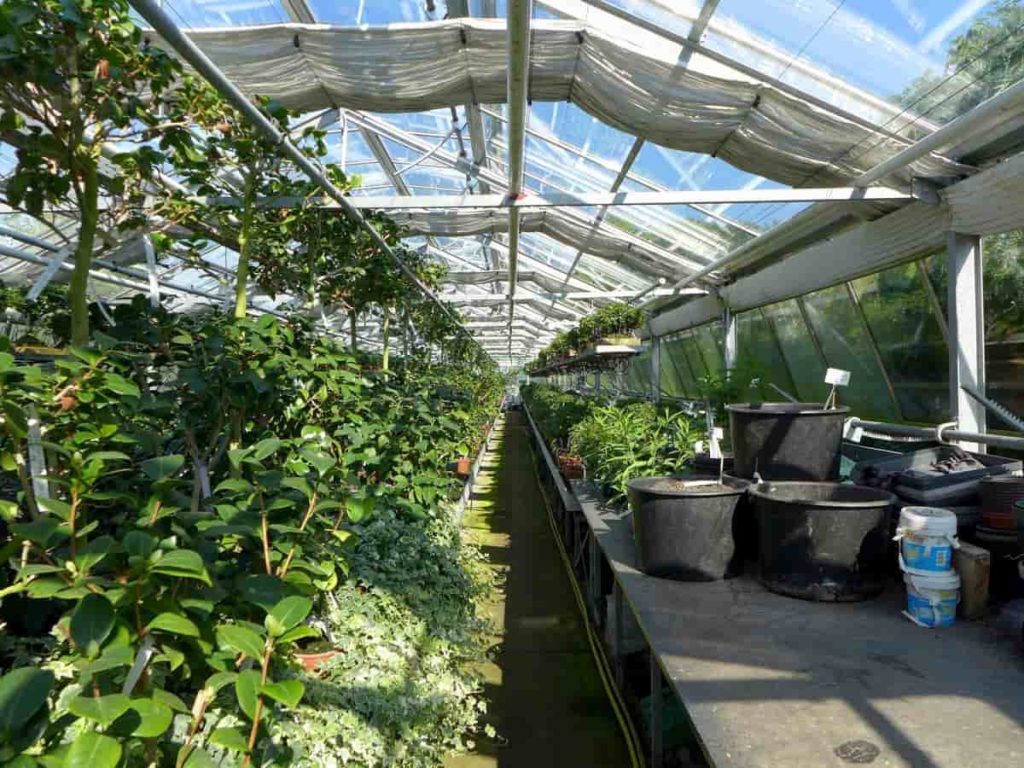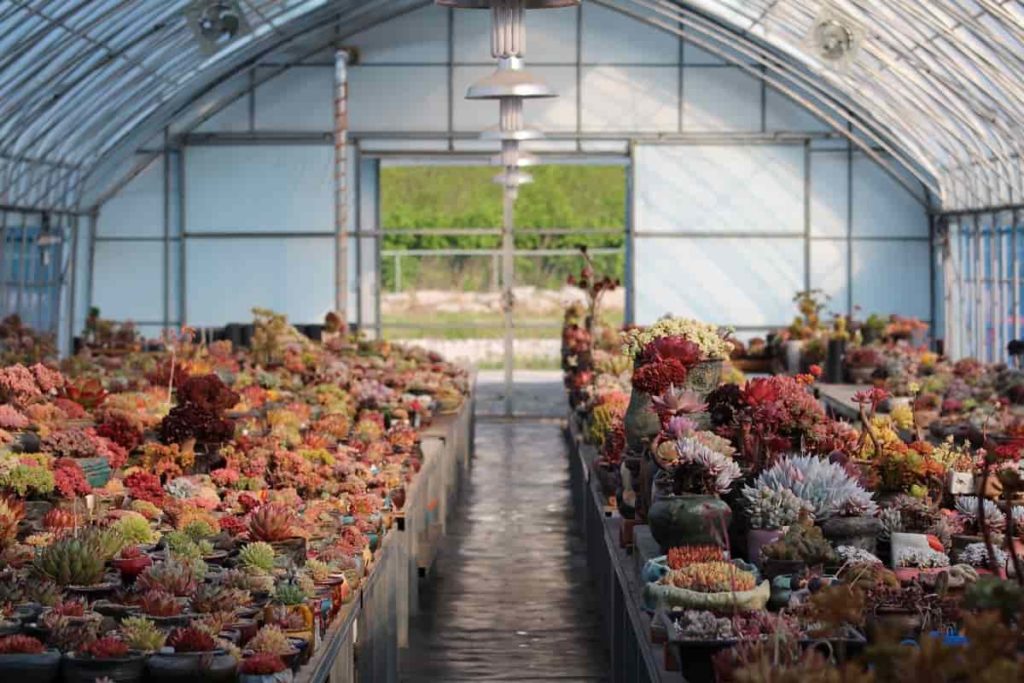It might be difficult to start seedlings outdoors. It’s not possible to maintain a comfortable temperature and level of humidity. That’s when a greenhouse garden on a terrace comes in handy. DIY terrace greenhouses are enjoyable and rewarding projects to take on in the middle of winter, even though you can buy one from several places. Let’s check out how to make a greenhouse on terrace.

When it comes to beginning plants from seed and cultivating flowers and vegetables at home, a greenhouse is a must-have on every gardener’s wish list. In addition, a greenhouse extends the growing season far into the fall, allowing you to get a jump on spring planting. Traditional greenhouses are prohibitively costly, and they’re often too huge for the ordinary backyard. You can either buy a ready-to-assemble greenhouse kit, or you can get designs and construct the greenhouse from scratch for your terrace, which is a good thing.
It is possible to create and maintain the ideal microclimate for seed starting in advance of spring by using a terrace greenhouse. Indoors, this greenhouse may be used to develop houseplants, propagate succulents, force bulbs or raise salad greens at any time of the year. An affordable terrace greenhouse can be constructed using whatever materials are already in your home.
Benefits of greenhouse gardening
Many gardeners are hesitant to invest in greenhouse construction because of the high upfront costs. Although they don’t see the benefits involved in greenhouse gardening.
- 6 to 8 degrees lowers the temperature in the house, which may save money on air conditioning.
- Reduces a building’s total heat absorption and protects it from both heat and cold
- Foods that are free of any pesticides or herbicides.
- Suitable for a healthy lifestyle that includes regular physical activity, fresh air, and a connection to nature.
- Reduces noise pollution.
- Save Money on Your Grocery Bills
- Gardening regularly
- Plants’ Safety and Security are ensured.
- Gardening can be done in all Seasons in a Perfect Growing Environment.
- Customization is very easy.
- Gardening Spot With Multiple Uses
Materials needed for the construction of a greenhouse
A greenhouse can be built in several ways. Building your own free-standing or connected greenhouse is an option as is building a tiny DIY greenhouse using greenhouse kits purchased at your local hardware shop. The materials you’ll need for your greenhouse will depend on how you want to heat and cover it. The following is a list of potential items needed for this home improvement project.
In case you missed it: Earning 24 Lakh from Greenhouse Farming – A Success Story

Building materials required: Depending on your demands, choose a material for the greenhouse’s frame. Wood, PVC pipes, and aluminium are common greenhouse framing materials. If you live in an area with extreme weather conditions, you should think about how solid and durable your greenhouse has to be. Aluminium frames, for example, are very durable and resistant to corrosion and precipitation. Also, be careful as you are choosing greenhouse materials for your terrace where the wind might be strong.
Cutting tools required: You can use scissors to cut plastic sheeting and a mitre saw to cut wood to the measurements you need for your project. The particular cutting equipment you’ll need for your greenhouse will depend on the particular material you pick.
Hardware equipment required: This includes conventional hardware equipment like a hammer, nails and screws, or any other item that is indicated in your greenhouse blueprint.
Tools and accessories: Measurement tape, sealant, or adhesive will be required to complete this activity.
Coverings for greenhouses: Whatever material you pick to cover your greenhouse will help to retain heat in the building, which will, in turn, help your plants to develop more quickly. It’s important to keep this in mind while picking out a cover. These include glass, polycarbonate panels, and polyethene sheets.
How to make a greenhouse on terrace
Check if you need any permission
Add a greenhouse on your terrace by checking with your local government to see what permits are required. Make certain that your greenhouse is legally acceptable and complies with any local regulations that may be in effect.
Measure the area on your terrace
Regardless of whether you purchase a greenhouse kit or construct one from the ground up, you must consider the dimensions carefully. Building and heating a bigger greenhouse will cost more money. Most terrace greenhouses are 8 by 6 feet.
In case you missed it: Top 20 Flowers To Grow In A Greenhouse

Choose the greenhouse kit
If you’re a new builder or lack the support of others, a greenhouse kit is the best option. Pop-up or polycarbonate greenhouses can be purchased at home improvement shops and Amazon for a reasonable price. Larger, sturdier versions might run up hefty tabs, so shop around before investing.
Build a frame
PVC tubing or steel supports can be used to construct the domed ceiling. Domed models have less head and storage capacity than rectangular variants because of their form. This design can be made at a low cost, but the less costly the material, the less stable it is likely to be.
Select a sturdy frame
You’ll need a foundation and a frame to build this structure. If you aren’t an architect, you’ll need to purchase greenhouse plans or hire someone to construct them for you. When building an A-frame greenhouse or another stiff frame, you’ll need a solid base and a strong frame. A big framed greenhouse will require the assistance of family or coworkers.
Use polythene
It’s best to use LDPE tarps rather than UV stabilized polyethene since they’re less harmful and last longer. It is UV-resistant. Every few years, plastic film has to be renewed. The non-toxic LDPE plastic has a longer life expectancy than PET. It should be cleaned now and again. Even though it does not keep heat as well as glass, this material is suitable for tiny framed greenhouses such as lean-tos, Quonset huts, and other similar structures.
Make it multiwalled
Use a more costly, but non-BPA-containing, acrylic or another hard, double-walled plastic, such as multiwall polycarbonate or corrugated polycarbonate. You can bend polycarbonate around the frame and save up to 30% on your energy bill since it’s double-walled. There will be no chips or cracks in the polycarbonate during construction since it is 200 times more resistant to breakage than glass. In addition to its great light transmission and UV stability, polycarbonate includes water-soluble toxins such as bisphenol A.
80 percent of light passes through polycarbonate, which is tougher than glass but less transparent than acrylic. 90% of the Acrylic filters are genuine. If you’re creating a framed greenhouse, fiberglass instead of glass might save you money on the roof since it’s lower in weight. [11] After a few years, fiberglass will become yellow and lose its clarity. If you’re looking for the best value, acrylic is the way to go. Opt for crystal-clear fiberglass or acrylic if possible. Every 10 to 15 years, it will require a fresh coat of resin.
In case you missed it: Greenhouse Gardening Frequently Asked Questions

Improve the quality of your fiberglass by investing in better fiberglass. Fiberglass of a lower quality transmits light at a much lower rate, thus you’re better off buying Acrylic. Compared to glass, this will save you around a quarter of the cost and is much simpler to deal with.
Using glass
Glass is the best option. If you’re creating a greenhouse to complement your home or garden, this is the best material to choose. In contrast to glass, which is very brittle and costly to repair acrylic, fiberglass and polycarbonate need to be replaced regularly. To prevent damage from settling, you must construct a greenhouse with a base. Because it is more durable than conventional glass, tempered glass should be used for the roof. If you live in a hail-prone location, you should choose float glass with a thickness of 4 mm.
If you’re planning to invest in a glass greenhouse, you’ll want to get bids from construction experts to be sure the base and frame can support the weight. Second-hand glass can be more cost-effective than new plastics when it comes to constructing greenhouses.
Seal the coverings
The closer you can get the coverage to the frame, the better. In certain cases, the film can be simply bolted on. If you’re using a high-end material like glass, fiberglass, or double-walled plastic, you should spend extra time securing it to the base and frame. Investigate the most effective process for the chosen covering.
Temperature control
Install fans in the greenhouse’s corners. Fans should be arranged in a diagonal pattern to circulate air. During the winter, they should be running practically continually to ensure that the whole greenhouse receives the heater’s benefits. Ventilate your greenhouse by putting vents in the ceiling. On the other hand, they may also be placed on top of the support. Carbon dioxide must be ventilated to some degree. The vents need to be movable. In the heat, you’ll need to widen them.
Consider an electric heater as an option. Having a backup heater in your greenhouse is vital since solar heat only accounts for 25 percent of the greenhouse’s heat. The wood or oil heater can also be used, but it must be vented outside to keep the air clean. Carbon dioxide poisoning is a real threat in such a small space, so be sure to keep an eye out for it. A glass-frame greenhouse will need a forced-air system. Almost anything may be grown in a greenhouse if you have the funds to install a temperature control system.
In case you missed it: Growing Cauliflower In Greenhouse – A Planting Guide

Installing your system will need the services of an electrician and a general contractor. Frequent maintenance may be required to keep it in good working order throughout the winter. Thermostats should be installed in many locations in case one fails. They should be placed at various levels of the greenhouse so that you can keep an eye on the greenhouse’s temperature at all times. The temperature inside your home and greenhouse can be measured using a thermostat, so you can keep a careful eye on things throughout the colder months.
Frequently asked questions about greenhouses (FAQ)
What is the cheapest way to build a greenhouse for a terrace?
Using inexpensive materials for constructing your terrace greenhouse can reduce the cost. Stretching 4 or 6 mm plastic sheeting over multiple bent ribs is all it takes to construct an easy do-it-yourself greenhouse. There is a rectangular foundation of two-by-six timber fastened together and secured to the ground in this kind of greenhouse. The ribs are curved upwards forming an arch.
Does the greenhouse need full sun?
During the winter, a greenhouse should be exposed to at least six hours of direct sunlight each day. Because many plants thrive in direct sunlight, it’s better to avoid placing your greenhouse where it will cast shadows. Partial shade, on the other hand, may be preferable in places with very bright temperatures, high altitudes, or for plants that prefer the shadow.
In case you missed it: Greenhouse Gardening For Beginners – Planting Guide

How warm should a greenhouse be in winter?
A greenhouse’s summer temperature ranges from 75 to 85 degrees Fahrenheit throughout the day and 60 to 76 degrees Fahrenheit at night. 65 to 70 degrees Fahrenheit during the day, and 45 degrees at night. Shade cloth, ventilation, and heating are the greatest ways to regulate the temperature.
- Broccoli Seed Germination and Selection
- Asparagus Seed Germination and Variety Selection
- Seasonal Flower Gardening: Best Practices for Spring, Summer, Fall, and Winter
- How to Grow Hibiscus from Flower
- Plantation Ideas for Home Decoration: A Beginners Guide
- Flower Garden Designs and Layouts for Beginners
- Planting and Spacing Techniques in Papaya: A Beginner’s Guide
- Growing Gold: Essential Techniques for Planting Pineapples
- How to Make Kalanchoe Plant Bushy: Home Remedies and Solutions
- 11 Reasons Why Your Gardenia is Not Blooming: Home Remedies and Solutions
- Eco Elegance: The Guide to Designing a Drought-Tolerant Landscape
- Gardening on a Slope: Strategies for Hillside Landscaping
- Nourish and Flourish: Top Organic Mulches for Thriving House Plants
- Everything You Want to Know about Indian Mogra Flower: Discover Uses and Growing
- Green Thumb Success: Expert Tips for Cultivating Greenhouse Pumpkins All Year Round
- Maximize Growth & Flavor: The Ultimate Guide to Companion Planting in Herb Gardens
- How to Control Rhododendron Problems Naturally: Home Remedies and Organic Ways to Fix Them
- Natural Magic: The Remarkable Benefits of Cinnamon for Plants
- Best Steps to Revive Dying Tulip with Natural and Organic Treatment
- 10 Reasons Why Your Angel Trumpet is Not Blooming: Remedies and Treatment
- How to Fix Periwinkle Leaf and Flower-Related Problems: Natural Remedies and Solutions
- How to Fix Zinnias Leaf and Flower Problems: Discover Natural and Home Remedies
- Organic Steps to Induce Lemon Tree Flowers: A Comprehensive Guide
- Bloom Booster: Crafting the Perfect Homemade Bougainvillea Fertilizer
- Optimizing Growth: A Guide to Applying NPK Fertilizer for Potted Plants
- 10 Best Homemade Fertilizers for Rubber Plant: DIY Recipes and Application Method
- How to Boost Female Pumpkin Flowers: Effective Steps for More Flowers and High Yields
- Transform Your Indoor Garden: Top Benefits of Pink Salt for Houseplants
- 10 Best Homemade Fertilizers for Peacock Plants (Calathea): Easy DIY Guide
- Unlock Blooms: 9 Reasons Why Your Potted Chrysanthemum is Not Blooming
- 8 Reasons Why Your Potted Hibiscus is Not Blooming: Fix it with Simple Solutions
- Unlock Blooms: 9 Key Reasons Your Potted Frangipani Won’t Flower
- 10 Reasons Why Is My Ice Plant Not Blooming: Remedies and Treatment
- 10 Reasons Why My Potted Hydrangea Not Blooming: Treatment and Remedies
- 10 Reasons Why is My Wisteria Not Blooming: Remedies and Treatment
- 10 Reasons Why is My Goldfish Plant Not Blooming: Remedies and Treatment